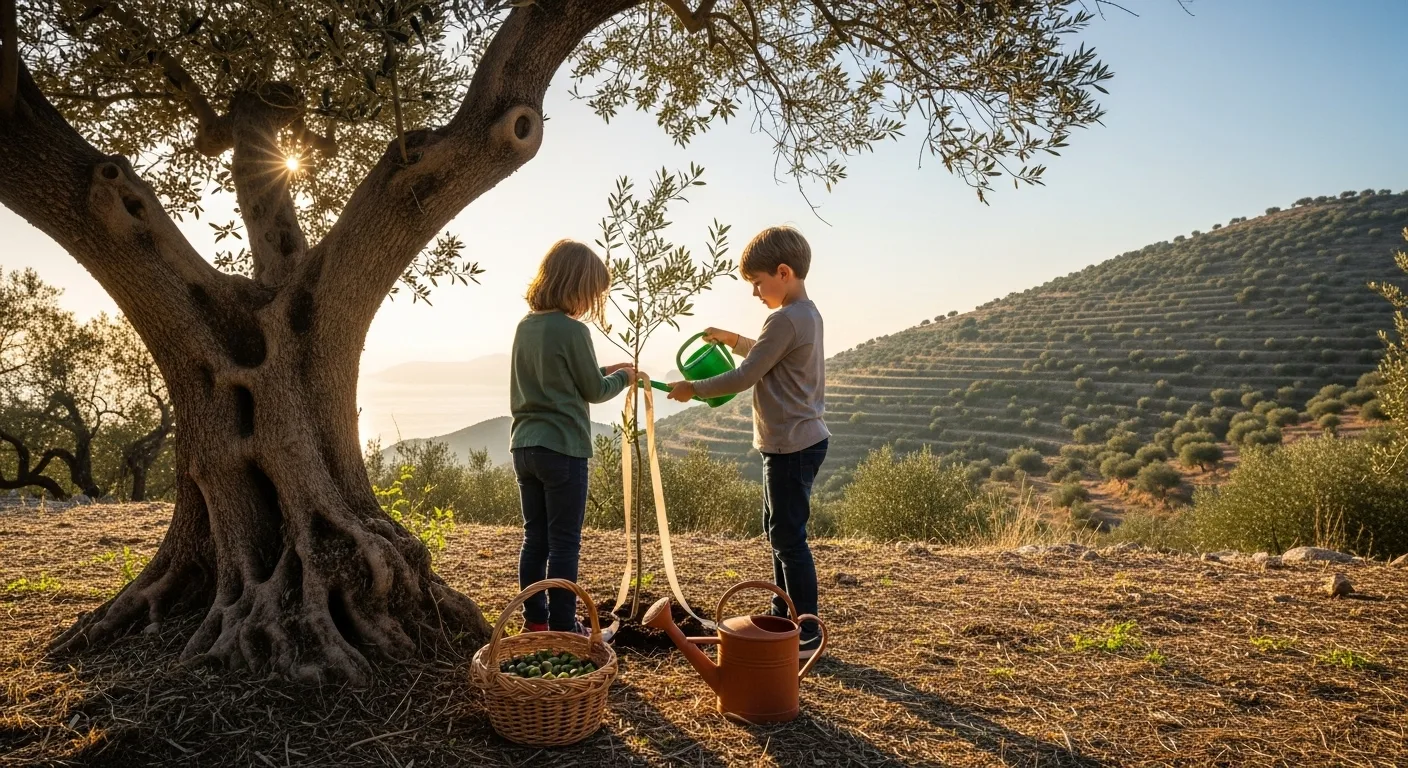Agriculture is one of the most ancient bonds between humanity and the soil. Yet, today, this bond is at risk of breaking. Urbanization, digitalization, and fast consumption habits are distancing new generations from nature; villages are growing silent, and trees are left orphaned. At this very moment, a hopeful idea is sprouting: olive groves growing with children.
This idea is not just a production project; it is an effort to build a generation that connects with nature, internalizes sustainability, and feels the responsibility of production from an early age. Because if we are to talk about the future of agriculture, we must place children—the true owners of that future—at the heart of the process.
A Generation Growing with the Soil: Why Now?
Children’s connection to nature must go beyond curiosity confined to screens. The escalating climate crises, concerns over food security, and an urban culture increasingly detached from production call us back to our roots. Olive trees can be a symbol of this call, because:
- They are long-lived, narrating a story of growth spread across time, much like a child’s development.
- They require patience, effort, and loyalty.
- They symbolize peace, wisdom, and abundance.
A child’s encounter with an olive tree—planting it, harvesting its fruit with their own hands—not only fosters agriculture but also nurtures a sense of belonging and responsibility toward nature.
The First Step to the Olive Grove: A Journey Beginning with Education
The first step in this vision is to make agriculture an integral part of education. Olive groves can be more than just production areas; they can be open-air classrooms.
- Starting from kindergarten, children who meet olive trees learn about their seasonal cycles, care, and harvest times.
- Through workshops, nature walks, and hands-on agricultural activities, a child becomes not just an observer but someone who lives alongside the tree.
- Each child has an olive sapling: planted together, grown together, harvested together.
This sapling is not just a tree; it is a seed of awareness.
Family and Community Involvement: Responsibility Passed Down Through Generations
Olive groves growing with children are a community model that involves families as well. Olive oil recipes passed from grandparents to grandchildren, the first pressings done together, and harvest festivals turn the olive grove into more than a production site—it becomes a living cultural memory.
This model also strengthens the sustainability of local producers. As olive trees are adopted, the responsibility for their care and protection grows. Every olive grove preserved for the future gains strength through community solidarity.
A New Agricultural Perspective: From Ownership to Belonging
To build a new consciousness in agriculture, we need to foster a sense of belonging rather than mere ownership. When a child recognizes their own sapling in an olive grove, they internalize the climate crisis, the value of agriculture, and the journey of food. When they become decision-makers tomorrow, they will approach soil, water, and trees with greater fairness. Every step we take today leaves a mark not only in the soil but also in the world of children. It is possible to leave them not just fruit but a way of life grown together.
If Every Tree is a Child’s Hope
If we speak of the future of agriculture, that future must be built not only with technology but also with people, children, and nature. Imagine an olive grove: its saplings planted by children’s hands, its fruit harvested together, its oil pressed collectively. That olive grove is not just a production area—it is a living school, a growing hope. Olive groves growing with children herald generations that hear the voice of the soil and take root in the future.


